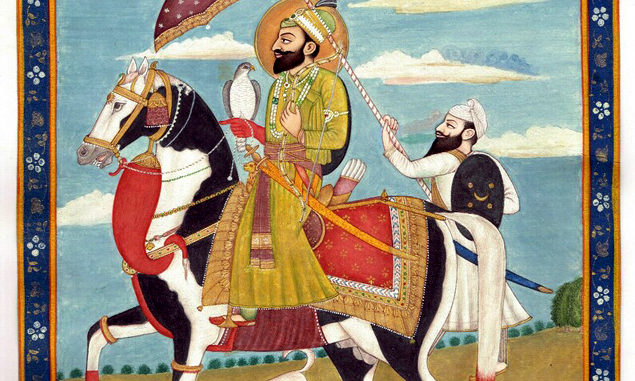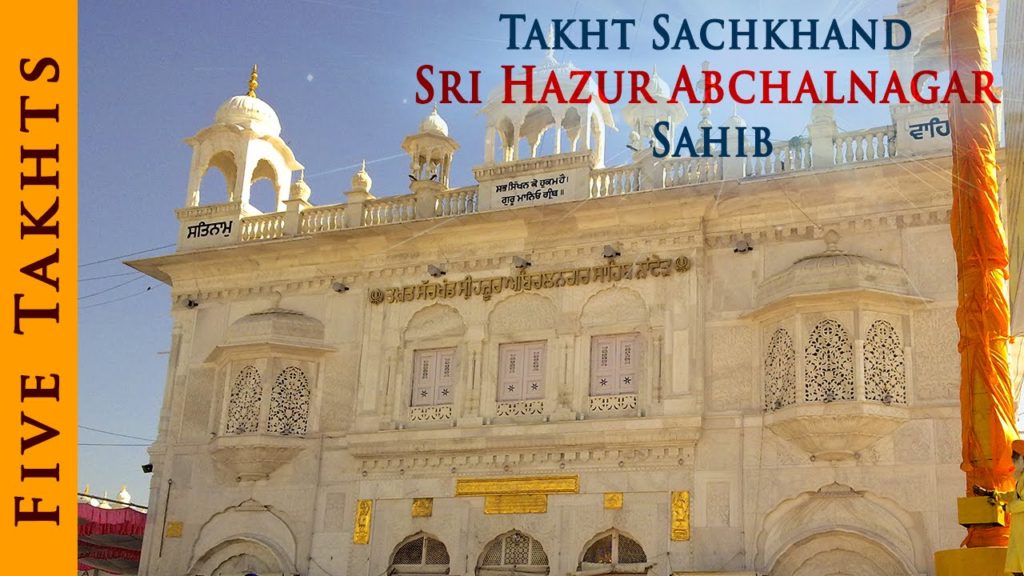

Commemorating the 356th Sacred Anniversary of his Blessed Advent in the city of Patna, State of Bihar in India, the disciples of Guru Gobind Singh Sahibji offer homage to the multi-dimensional Prophet, the Beacon-of-Light, who strictly proclaimed an injunction upon his followers thus: “I am an insignificant slave of the Primordial-Being. Those who worship me as GOD shall have to endure hell”.
Hewas a Visionary, Saint, Scholar, Poet, Philosopher, Warrior, Connoisseur & Patron of artistes and skilled warriors. Guru Gobind Singh Ji sacrificed his parents, spouse and 4 minor sons, at the altar of upholding human dignity and Freedom of Faith/Religion & Right to Expression. Guru Gobind Singh Ji mastered many languages including Sanskrit, Urdu, Hindi, Braj, Gurmukhi and Persian. He also learned martial arts to become adept in combat. In his 42-year sojourn on this planet, he authored several poetic compositions like ‘Akaal-Ustat’ (Pristine-Praise of the Timeless One). The Great Guru accomplished all of this while remaining mindful of his Divine Assignment of steadfastly being the Defender of Human Rights of the populace. Hence, he did not shirk his duty, when he was pulled into fighting 16 battles against the overpowering might of the Mughal Emperor of India, who was equipped with a massive army and large arsenals. Although he braved several acts of betrayal, treachery, deception, jealousy from various quarters, yet his utmost trust in ONENESS of humanity brought him loyalty from both sides, all of the Divine-conscious and conscientious Muslims and Hindus, when they sacrificed their life, fighting against tyrannical oppressive forces of darkness.

He was anointed Guru, when he was merely 9, by his predecessor and father, Guru Tegh Bahadur Ji, when the latter marched towards Delhi, to voluntarily court arrest, in support of the Kashmiri Pundits who were being forced by the Mughal emperor, to give up their religion or to face death. Guru Tegh Bahadur Ji was, then, martyred by being beheaded, after witnessing the torturous martyrdom of his three disciples, Bhai Mati Das Ji, Bhai Sati Das Ji and Bhai Dayal Das Ji. This was a turning point in Indian history, which led to another historic event. On the day of Vaisaakhi in 1699, Guru Gobind Singh Ji formalized the martial institution of ‘The Order of The Khalsa’, the valiant force, making it mandatory for all Sikhs to wear a turban and to retain unshorn hair and beard.

In our contemporary world, the Khalsa-panth (Pathway) or ‘The Way of Life’ is what The Guru gave to the Sikh community, which constitutes a large part of the global diaspora where several Sikhs are the influencers, being in positions of authority, as Parliamentarians and officials in government, in U.S.A., Canada, U.K., Australia, New Zealand, Malaysia, Singapore amongst other nations. In numbers, Sikhism is the 5th largest religion in the world, with some 28 million adherents.
The Sacred Utterances of the Tenth-Divine-Sovereign includethe poetic Zafar-Nama (The Epistle of Victory) as a voluminous letter to the tyrant Aurangzeb, who felt such immense remorse upon reading it, that he died, soon thereafter. This communication clearly said that the Mughal Emperor did not behave as behoves a Sovereign ruler.
The Guru wrote: “The Lord is One and His Word is True. The Victory is of the Lord. Aurangzeb, you’ve been pretending to be a devout and pious Muslim, whilst in reality, you are a liar who committed a blasphemous act by swearing on the Oath of Holy Quraan, which oath was falsified by your treacherous and devious actions like attacking my forces, who were promised safe passage, if we vacated the Fort of Anandpur Sahib. Furthermore, you ought to be castigated for the execution of my two minor sons, who were bricked alive in Sirhind”.
Guru Gobind Singh Sahibji authored the ‘Resplendent-Drama’ or Play (Bachitar or Vichitra Naatak) a poetic-autobiography about the time on the Hemkunt range of mountains, where he was immersed in meditation, merged in Communion with The Divine. Thence, he was Commanded by The Almighty Majesty to assume the human-frame, in the form of the 10th Embodiment on The Spiritual Throne of The Divine Preceptor, Guru Nanak Sahibji, in order to thwart the nefarious designs of tyrannical forces. Bachitar-Natak is part of the ‘Dasam Granth’, the Sacred Texts written by the 10th Guru. One stanza reads thus: “I have come into this mortal-world for this purpose. The Supreme Lord has sent me for the propagation of Righteousness, everywhere, and to seize and destroy the sinful and the wicked. I have taken birth for this purpose, let all holy men understand this. I have come to disseminate Divine Religion. I am committed towards the protection of saints; and for annihilating all the tyrants”.
Shri Daulat Rai Ji, a prominent figure in the Arya-Samaj sect of Hindusism, wrote a book ‘Sahib-E-Kamaal’ Guru Gobind Singh, the Spiritual-Master par excellence. It is dedicated to Guru Gobind Singh’s life, his noble thought and his mission so that the populace at large could have a just view of the Guru’s greatness.”

At the battle of Muktsar Sahib, he was rejoined by his 40 Sikhs, who had earlier deserted him. They were inspired by a brave lady Mai Bhaago Ji to return to the battlefield. Travelling through Gwalior, The Guru was headed towards The Deccan area, at the invitation of Aurangzeb who wanted to apologize. The Guru was forgiving and went ahead, considering that the Mughal Emperor was almost double his age. En-route, The Guru got news that Aurangzeb had died.
Finally, Guru Gobind Singh Ji decided to terminate human-Guruship and so he passed on the mantle to The Scripture, at Nanded, where Gurdwara Takht Hazoor Sahib attracts devotees and pilgrims, from all over the world. Now, The Scripture, Sri Guru Granth Sahib was anointed as the Eternal-Guru in 1708, when Guru Gobind Singh Ji realized his mission was accomplished and it was time to shed the mortal-frame. As a mark of humility, he did not include his Sacred Verses in Sri Guru Granth Sahib, as he opined, he was not evolved up to the level of 6 Gurus and 35 Hindu & Sufi Muslim Saints, whose compositions are enshrined therein.

The five virtues recognised in Sikhism are Sat (Truth), Santokh (Contentment), Daya (Compassion), Nimrata (Humility) and Pyaar (Love). For the Sikhs, the final goal of life is to reunite or merge with God (Mukti). The Sikh Gurus taught that to achieve this goal it was important to work hard at developing positive human qualities which lead the soul closer to God. The Gurus taught that all human beings have the qualities they need to reunite with God but they must train their minds to make the most of these qualities.In order to reach the final goal of life, Sikhs believe that they must constantly develop their love for God by developing compassion for all God’s creation. The mind of someone who is gurmukh (literally, ‘Guru facing’), is constantly focused on God at all times; while the mind of Manmukh (literally, ‘mind facing’ or “mind centred”) is full of desire, attractions, doubts, greed, etc and he or she will be full of sorrow and pain.
Amongst the faithful devotees of Guru Gobind Singh Ji, several notable loyal Hindus and Muslims are respected by all Sikhs.
Bhai Nand Lal Ji (c. 1633-1713), was an eminent poet laureate in the Guru’s Darbaar. He fled from Aurangzeb’s persecution. Hakim Allah Yaar Khan Jogi, an unbiased Muslim poet/writer wrote two poems almost a century ago, one on Chamkaur, under the title Ganj-a-Shaheedan and the other on Sirhind, entitled Shaheedan -a-Wafa, in homage to the 4 minor sons of The Guru. Pir Bhikan Shah saw the Divine Light emanating from the birthplace of The Guru and started bowing in Islamic Prayer, towards the East instead of towards Mecca in the West. He visited the newly born Guru, tested him by presenting two bowls (representing Muslims & Hindus). The Guru placed his hands on both. The Pir further said that he was immensely impressed and pleased with this act of the Holy child. The Pir, his disciples and servants then returned to his home and remained a steadfast supporter of the Guru for his entire life. Pir Buddhu Shah was a Muslim-Divine whose real name was Badr ud Din, who was an admirer and ally of Guru Gobind Singh. He brought many hundreds of his followers and his family members to assist the Guru’s force. However, the Mughals executed him, after the battle, for supporting the Guru. Diwan Todar Mal Ji was a wealthy Hindu merchant of Sirhind,performed the cremation of the three martyrs: the two younger sons of Guru Gobind Singh, Gujri aged 9, Fateh Singh aged 6 and their grandmother, Mata Gujari JiThe two children were bricked alive, for refusing to renounce their faith. Their grandmother at the news of the sudden and despicable execution of the innocent youngsters. This wealthy merchant had to cover the required ground for cremation with an estimated7,800 gold coins.Baba Moti Ram Mehra Ji served edibles and milk to the two little Sahibzadas and Mata Gujri Ji. He did not conceal his act and boldly told the Nawab that it was his pious duty to serve edibles to the imprisoned innocent children and their grandmother. Hence, Baba Moti Ram Mehra, along with his family, were sentenced to death by being squeezed in a Kohlu (oil press).The Guru blessed the brother-duo, Ghani Khan and Nabi Khan with a ‘Hukamnama’: a letter of commendation stating that both of them were the “Sons of Guru Gobind Singh”.Guru Gobind Singh Ji blessed Nawab Sher Khan, Ruler of Malerkotla, for vociferously protesting against the inhuman act of bricking-alive two minor sons of The Guru. Muslim-dominated Malerkotla is the only Muslim majority city in Punjab with 68.5% residents being Muslim and the rest being Hindus, Sikhs, Jains, Christians and Buddhists. Not a single one was harmed here, during the riots erupted during the partition of India. All these noble ones have gained immortality and have become a part of Sikh history.
The Guru was an empathetic humanist to the core, a brave commanding general as well as a soldier, leading from the front. The Divine Guru Gobind Singh Ji gifted his disciples, a practical ‘Way of Life’, after sacrificing his entire familyfor Human-Rights. His unflinching resolve to stand up and to fight for Equality, Justice, Liberty, Peace and Harmonious Co-Existence which are as relevant, today, as they were over three centuries ago.
“For this purpose was I born, let all virtuous people understand. I was born to advance righteousness, to emancipate the good, and to destroy all evil-doers root and branch.” —Guru Gobind Singh.
(The author, a thinker and scholar, is a regular contributor to The Indian Panorama. He can be reached at amar1ujagar1pritam@gmail.com)





Be the first to comment